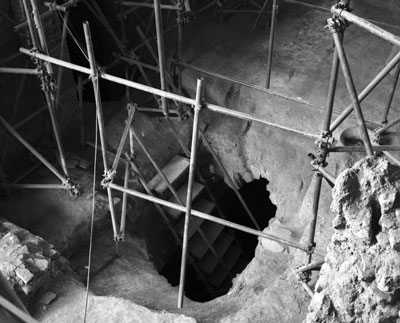A Blind Spot
Haus der Kulturen Welt
Haus der Kulturen Welt

The curator Catherine David announced this exhibition back in 2010 during a public debate with the artist Joachim Koester at the first Berlin Documentary Forum. The issues addressed by the forum are still relevant today: both an overload and a scarcity of images, the impact of digitization on perception, the status of photography and changes in documentary practices. A Blind Spot became part of Berlin Documentary Forum 2; in a text accompanying the exhibition, David spells out her concerns: There are ‘no “good” and “bad” pictures’, she writes, but only pictures that either ‘encourage and question critical judgement’ or ‘assign fixed places to their subjects (both the subjects of the photographs and those who look at them) by blocking the mobility of the gaze and of thought’. The eponymous blind spot names the point in the human eye where the optic nerve joins the retina, leaving a gap where there are no photoreceptor cells. The missing image material is reconstructed by the brain using information from the other eye. David’s show brought together works by ten artists who address such gaps and imperfections in vision either directly or by allusion.
Her approach also opened up the relationship between image and fiction. Koester’s series of black and white photographs The Barker Ranch (2008) is about the farm where Charles Manson lived with his notorious ‘family’ and planned the murders of Sharon Tate and others. An accompanying text explained the history of how photographic images of these locations were used in the Manson trials. Yet Koester’s photographs look like portrayals of classically American outposts, prototypical settlements on the edge of the civilized world; they evoke the history of the brutal conquest of the American continent – as if violence, suffering and death had somehow been inscribed in the landscape itself since the days of the Founding Fathers.

Eric Baudelaire reflects on cultural landscapes in The Anabasis of May and Fusako Shigenobu, Masao Adachi and 27 Years without Images (2011). The artist – borrowing a strategy used by the filmmaker and later Japanese Red Army activist Masao Adachi – applies it to Adachi himself. In his feature film A.K.A. Serial Killer (1969), Adachi presents footage of locations where a serial killer had lived until he was arrested; the filmmaker’s aim was to show the living conditions that shaped the killer, highlighting their inherent structures of authority and repression. Adachi, who went into voluntary exile in Lebanon shortly after making the 1969 film, commissioned Baudelaire to make a film documenting selected locations familiar to Adachi from his clandestine existence in Lebanon. The result is a complex, fragmentary history, which combines pictures from Tokyo, clips from Adachi’s films and commentary from Adachi himself as well as from the founder of the Japanese Red Army, Fusako Shigenobu, and her daughter May. The film – highlighting the illusory quality of the relatively simple worldview of these young activists – suggests that they were the victims of their own visions.
Hassan Khan’s Muslimgauze R.I.P. (2010) took this approach one step further. The video shows a boy hanging around aimlessly in a living room in an apartment block. This unspectacular episode is set in Manchester in 1982, when the experimental musician Bryn Jones (1961–1999), better known as Muslimgauze, released his first recordings as an artistic response to the Lebanon War. Jones subsequently became known for not only his support of the PLO and his tirades against Israel but also his distinctive, exoticizing music style, which coloured industrial and noise genres with oriental rhythms and elements. He never visited the Middle East and lived in the same house in Manchester until his death; Khan’s film seems to suggest a similarity with the lingering boy who mostly looks out of the window. That may be better than looking away, but it can become an attempt to escape one’s own dismal reality of passivity, powerlessness and innocence. No view is free from illusion.
Translated by Nicholas Grindell
















